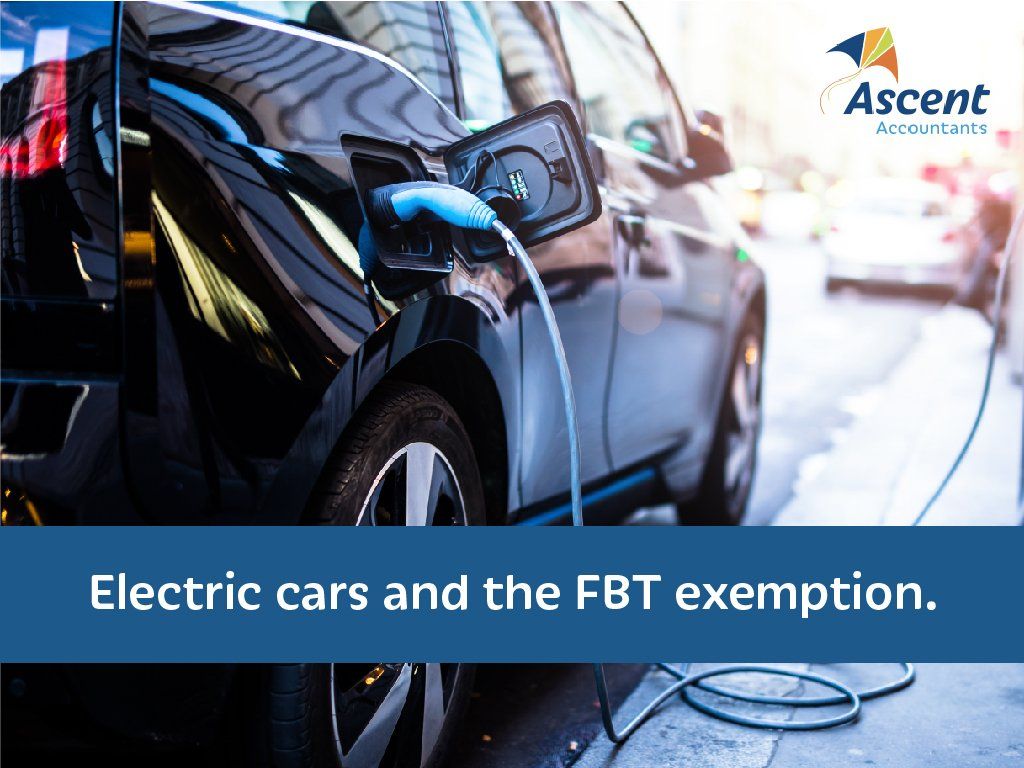Electric cars and the FBT exemption.

Recently, the Electric Car Discount Bill was formally introduced to Parliament. The Bill ensures vehicle owners opting for eligible cars with zero or low emissions are rewarded with an exemption from Fringe Benefits Tax (FBT).
Zero or low emission vehicles include battery electric vehicles, hydrogen fuel cell electric vehicles, and plug-in hybrid electric vehicles. However, petrol-hybrid vehicles without a plug are not eligible.
What you need to know about electric cars and the FBT exemption.
Eligibility.
To qualify for the exemption, eligible vehicles are to be first held or used after 1 July 2022. And yes — if you ordered before this date but received delivery after, you will still be eligible. A second-hand electric car may qualify for the exemption, as long as it was purchased new on or after 1 July 2022. The exemption is already in effect and will apply retrospectively from this date.
The total car value (including delivery fees, accessories, and options) must be below the Luxury Car Tax (LCT) threshold for fuel-efficient vehicles: $84,916 for 2022/23.
The exemption also applies to cars under salary packaging arrangements, including those procured under a novated lease.
What’s not covered.
The exemption does not cover vehicles other than cars, as defined for FBT purposes. For example, vehicles designed to carry one tonne or more, or nine passengers or more, will not qualify for the exemption.
As we mentioned before, petrol-hybrid vehicles without a plug are not eligible, and luxury electric cars also do not qualify.
Tax benefits with electric car salary packaging.
Aside from the obvious performance, efficiency, and environmental benefits, there are also tax benefits to packaging an electric vehicle (as opposed to buying one outright or on a payment plan).
As an example, you’ll enjoy an estimated saving of over $2,000 for a $50,000 model, such as the Nissan Leaf, when purchased without novated leasing. However, that same $50,000 car will have savings of up to $9,000 a year with salary packaging. Savings are expected to be even higher for more expensive vehicle models (just remember that luxury vehicles are not eligible).
Thanks to this new Bill, you can now salary package an electric or plug-in hybrid vehicle on a novated lease arrangement and save the 47% Fringe Benefits Tax. Like all salary sacrificing packages, any payments associated with your novated lease are deducted from your pre-tax income — saving you even more at tax time — and you don’t pay any GST on your electric car’s purchase price.
How can Ascent Account help here?
Great question! We’re not a novated leasing company, but we do partner with Fleet Network to help our clients enjoy a quality car through salary packaging. Fleet Network is full bottle on the new FTB exemptions for electric cars, and have kept us informed throughout the Government’s movements here so we can continue offering our clients relevant information.
If you’re interested in salary packaging, we can facilitate this in communications with your employer (assuming they’re approved for salary packages) and Fleet Network.
Contact us to talk about this in more detail — we’d love to help set you up with an environmentally-friendly electric vehicle and save on tax at the same time.
Need help with your accounting?








